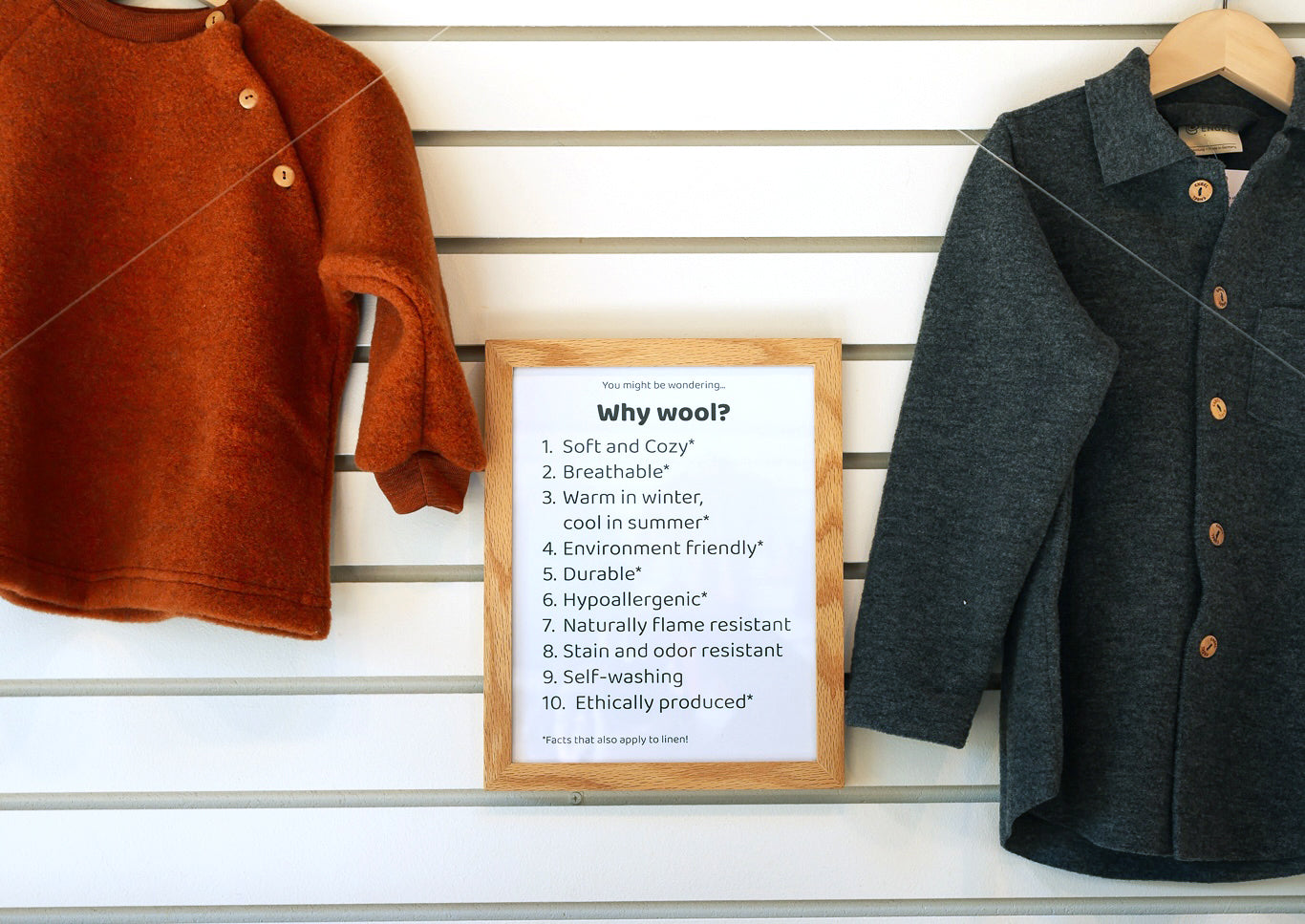When we had our little pop-up last winter, we hung a sign listing the reasons why wool is so great. Number 9 on that list ("Self-washing") prompted the most skepticism. At the time, I always felt I flubbed my explanation, spouting words like "magic" and "fiber structure." I doubt I ever really convinced anyone, though not for lack of trying... nor validity: On my recent vacation, I was reminded (and grateful!) yet again when my daughter's wool t-shirts stayed pristine the entire time, despite being worn on the plane, at the beach, around town, and to sleep. Here's a better explanation as to why:
Wool doesn't require frequent washing (including after soiling from food, dirt, and even pee — hi there new parents, we see you!), because of its unique fiber chemistry and structure, which inhibit odor buildup, repel dirt, and minimize sweat.
Okayokay, but how?
1) Crimped, scaly fiber morphology
Wool fibers have a distinctive cuticle layer made of overlapping scales (think pinecones). This:
- Traps less dirt than smoother fibers
- Makes it harder for debris to bind to the surface
- Contributes to the self-cleaning effect when wool is aired out—moisture changes help lift out particles
(Side note: "superwash" wool lacks this benefit, because it's gone through a process of descaling to make it machine-washable. Also, it's coated with plastic, but this is a topic for another day.)
2) Keratin-based protein structure
Wool is made primarily of keratin, the same protein in human hair. Keratin is naturally antimicrobial—it inhibits the growth of odor-causing bacteria. Fewer bacteria = less smell, even after extended wear.
3) Lanolin: a natural wax
Naturally occurring Lanolin coats the outer surface of wool fibers. This hydrophobic (water-repelling) wax:
- Prevents water-based stains from absorbing
- Provides a mild antibacterial and antifungal barrier
- Helps shed light dirt and debris
Note that Lanolin does wash out over time, which is why it's important to use a wool detergent like Eucalan, that contains Lanolin!
4) Thermoregulation and evaporation
Wool’s temperature-regulating properties (via evaporative cooling and insulation) also reduce sweating and odor in the first place, meaning fewer wash cycles are necessary.
We hope this intel leads to less laundry filled days, less water use, and more time spent doing fun things.
xo,
Emmanuelle & Alex


